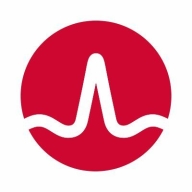

DX Spectrum and Splunk AppDynamics both compete in the monitoring solutions category. While DX Spectrum has an upper hand in infrastructure management, Splunk AppDynamics leads in application performance tracking due to its tailored features.
Features: DX Spectrum provides infrastructure management features such as seamless network topology views, fault isolation, and powerful scalability for managing thousands of devices. It integrates well with other CA products for a holistic enterprise monitoring solution. Splunk AppDynamics focuses on application performance management, offering detailed transaction tracking, JVM monitoring, and comprehensive insights into business transactions, which help in troubleshooting and optimizing application performance.
Room for Improvement: DX Spectrum needs a modern interface and a more straightforward configuration process, as its dependence on Java can be cumbersome. There's also a call for better reporting, integration with non-CA tools, and more user-friendly documentation. Splunk AppDynamics could improve its cost structure and expand its feature set to include comprehensive network monitoring capabilities, along with better integration with DevOps tools and a more competitive pricing model.
Ease of Deployment and Customer Service: DX Spectrum is primarily deployed on-premises, suitable for large enterprises with complex networks, and generally provides strong, though regionally variable, technical support. Splunk AppDynamics supports flexible deployments across on-premises, cloud, and hybrid setups, catering to varied business needs. It is generally praised for customer service, despite some suggestions for better responsiveness and documentation.
Pricing and ROI: Both DX Spectrum and Splunk AppDynamics offer complex premium pricing models. DX Spectrum's device-based pricing suits large-scale deployments and can yield measurable ROI through its integration features. Splunk AppDynamics, priced based on APM agents and application servers, can quickly become costly, albeit justified by its extensive monitoring capabilities and efficient problem resolution, offering substantial value and operational efficiency improvements.
Overall, as a production gatekeeper, we achieve at least 50% efficiency immediately, with potential savings ranging from 60 to 70% as well, reinforcing why it is a popular tool in the banking industry.
According to errors, exceptions, and code-level details related to their application performance on a daily basis, the application development team tries to help with Splunk AppDynamics to reduce errors and exceptions, which helps the end users get application availability and feel more confident.
To understand the magnitude of it, when the company asked to replace Splunk AppDynamics with another tool, I indicated that for the proposed tool, we would need five people to do the analysis that Splunk AppDynamics enables me to do.
Broadcom technical support is very good.
AppDynamics is much more helpful.
We got a contact, an account manager, to work directly with for technical support.
They help us resolve any issues raised by our team relating to operations, application instrumentation, or any other issues.
We have reached maximum capacity in our tier, and extending capacity has not been cost-effective from Splunk's perspective.
I would rate the scalability of Splunk AppDynamics as a nine out of ten.
I assess how Splunk AppDynamics scales with the growing needs of my organization as good, since we are growing and adding more servers.
It is necessary to conduct appropriate testing before deploying them in production to prevent potential outages.
There are no issues or bugs with the 20.4 version; it is very stable with no functionality or operational issues.
Splunk AppDynamics is superior to any alternative, including Dynatrace.
Currently, they appear as pop-up messages, but I would prefer having alarm messages shown as a scrolling bar at the taskbar for easier visibility.
The event management should have more deduplication and alert correlation and check the bidirectional communication with ServiceNow.
Splunk AppDynamics does not support the complete MELT framework, which includes metrics, events, logging, and tracing for the entire stack.
If AppDynamics could develop a means to monitor without an agent, it could significantly improve application performance and reduce potential problems.
A good integration with Splunk would be very interesting, as Splunk is a good product for logs, and that part is currently missing in Splunk AppDynamics.
The price of DX Spectrum is not competitive when compared to other solutions, such as SolarWinds.
We completed a three-year deal for Splunk and for AppDynamics, which costs millions of dollars.
Customers have to pay a premium price, however, they receive considerable value from the product.
All these solutions at the moment are cheap, but it is like paying for insurance; you pay insurance to avoid major damage.
The interface has the needed configuration for visualization, and it's effective in providing a complete diagram of network links and connections across various stations globally.
DX Spectrum uses an SNMP Trap to accept all the details, especially for device monitoring of faulty devices, allowing me to use Spectrum effectively.
We have multiple tools, but end users prefer to use Splunk AppDynamics because their portal navigation is very simple and clear.
The real user monitoring and digital experience monitoring effectively track actual user experience with the applications, including page loading, interaction time for both desktop and mobile applications.
This is the best feature because, although you can't monitor a whole application at once, Splunk AppDynamics gives you the option that if there is any failure—simple failure regarding anything set up as per our use cases—you will get an alert.
| Product | Market Share (%) |
|---|---|
| Splunk AppDynamics | 2.7% |
| DX Spectrum | 0.9% |
| Other | 96.4% |

| Company Size | Count |
|---|---|
| Small Business | 25 |
| Midsize Enterprise | 19 |
| Large Enterprise | 89 |
| Company Size | Count |
|---|---|
| Small Business | 55 |
| Midsize Enterprise | 36 |
| Large Enterprise | 193 |
DX Spectrum is a complete event and fault management system for network operations teams. The tool provides powerful capabilities for managing your dynamic, complex IT infrastructure, which includes physical, virtual, and cloud environments.The technology allows you to manage and optimize the infrastructure and the professional services that operate on top of it. DX Spectrum is a unified platform that helps your company enhance network service levels while lowering monitoring costs.
DX Spectrum has intelligent event correlation and root-cause analysis capabilities. It can pinpoint the precise components that are causing issues with availability and network settings. Reports and dashboards can be customized with role-based views. Change management solutions can also be used by teams to govern, track, and remediate changes across network devices.
DX Spectrum can identify multi-technology and multi-vendor stacks, as well as new software-defined networks (SDNs). It supports Multicast, MPLS, VPN, and VRF, among other routing protocols and technologies.
DX Spectrum Features
DX Spectrum has many valuable key features. Some of the most useful ones include:
DX Spectrum Benefits
There are many benefits to implementing DX Spectrum. Some of the biggest advantages the solution offers include:
Reviews from Real Users
DX Spectrum stands out among its competitors for a number of reasons. Two major ones are its robust root cause analysis and its event correlation tool. PeerSpot users take note of the advantages of these features in their reviews:
Umair A., Enterprise Solutions & Services Head at Duroob Technologies, writes of the product, “It covers networks very well. It has all the capabilities that you're looking for when it comes to monitoring. Spectrum is great for root cause analysis. It has excellent correlation event management. Spectrum's stability and scalability are also amazing. If you have a CA Service Desk, then it can be integrated so that if you have open tickets they can be closed automatically.”
Itarchit, an IT Architect at a comms service provider, notes, “The most valuable feature is the event correlation mechanism. I also like the product's multi-customer approach.” He adds, “We haven't seen a better product. Overall, I am happy with this solution. Based on the current market, I would rate DX Spectrum a nine out of ten.”
Splunk AppDynamics enhances application performance monitoring with advanced diagnostics and real-time insights, offering seamless end-to-end transaction tracking and infrastructure visibility.
AppDynamics provides critical tools for businesses to analyze application behavior and performance. Through innovative features like transaction snapshot analysis and adaptable dashboards, users can quickly identify and address issues, ensuring high levels of system uptime and efficiency. It is designed to support complex environments including Kubernetes and AWS, enhancing user experience by detecting performance issues early. Despite needing improvements in network monitoring and integration, it remains a robust option for tracking application health.
What are the key features of AppDynamics?In industries like financial services and e-commerce, AppDynamics facilitates performance tracking across distributed systems, optimizing infrastructure to meet consumer demands. It excels in environments needing precise transaction monitoring and is pivotal in delivering high value and satisfaction.
We monitor all IT Infrastructure Monitoring reviews to prevent fraudulent reviews and keep review quality high. We do not post reviews by company employees or direct competitors. We validate each review for authenticity via cross-reference with LinkedIn, and personal follow-up with the reviewer when necessary.